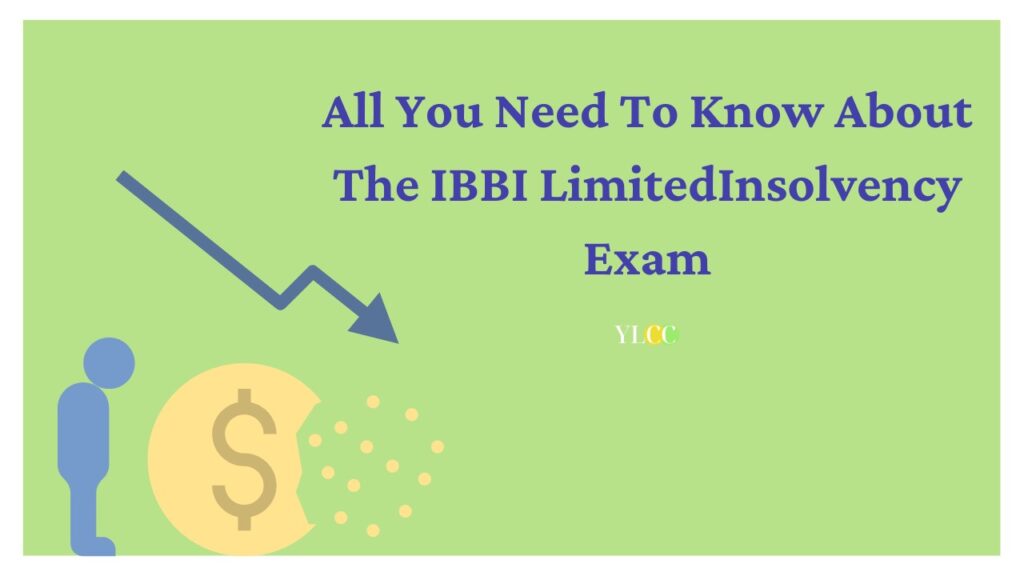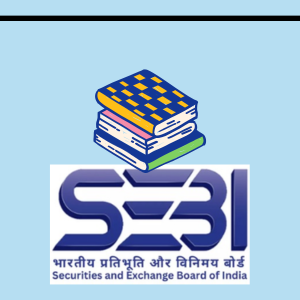
WHO IS AN INSOLVENCY PROFESSIONAL?
As per the Insolvency and Bankruptcy Code, 2016 (the Code), an insolvency professional (IP) means an eligible person who is enrolled with an insolvency professional agency (IPA) as its member and registered with Insolvency and Bankruptcy Board of India (IBBI/the Board) as an insolvency professional (IP).
In simpler terms, insolvency professionals are involved in the dissolution process of an insolvent individual, companies, LLPs or partnerships. These professionals are authorised to act on behalf of such insolvent individual, companies etc. During the bankruptcy situation, the insolvency professionals play a vital role in liquidating the entity assets and other settlement processes. This process has gained momentum with the government bringing in strict norms through Insolvency and Bankruptcy Code.
In India, one can practice as Insolvency Professional by qualifying the Limited Insolvency Exam that is conducted by the Insolvency and Bankruptcy Board of India (IBBI). In this article, Team YLCC brings you an overview on the Limited Insolvency Exam for aspiring candidates. Read on!
WHAT IS THE LIMITED INSOLVENCY EXAM?
The Limited Insolvency Examination is mandated under regulation 5 of the Insolvency and Bankruptcy Board of India (Insolvency Professionals) Regulations, 2016 made under the Insolvency and Bankruptcy Code, 2016. It is one of the mandatory conditions for registration as an insolvency professional.
SYLLABUS FOR THE EXAMINATION
| SL NO. | SUBJECT TOPICS | WEIGHT (%) |
| 1. | The Insolvency and Bankruptcy Code, 2016 (Code) | 04 |
| 2. | All Rules, Regulations and Circulars notified under the Code | 06 |
| 3. | The Companies Act, 2013 Chapter III – Prospectus and Allotment of Securities Chapter IV – Share Capital and Debentures Chapter V – Acceptance of Deposits by Companies Chapter VI – Registration of Charges Chapter VII – Management and Administration Chapter IX – Accounts of Companies Chapter XV – Compromises, Arrangements and AmalgamationsChapter XVII – Registered Valuers Chapter XVIII – Removal of names of the companies from the register of companies Chapter XX – Winding-up of the companies Chapter XXVII – NCLT and NCLAT Chapter XXVIII Special Courts Chapter XXIX – Miscellaneous The Partnership Act, 1932The Limited Liability Partnership Act, 2008The Indian Contract Act, 1872 Of contracts, Voidable Contracts and Void Agreement (Sections 10-30); Contingent Contracts (Sections 31-36); Performance of Contract (Sections 37-61); Novation, Rescission and Alteration of Contracts (Sections 62-67); Consequences of Breach of Contract (Sections 73-75); Contracts of Indemnity and Guarantee and Surety’s Rights (Sections 124-127); Bailment and Pledge (Sections 148-181); Agency (Sections 182-238)The Sale of Goods Act, 1930 | 04 |
| 4. | GENERAL LAWS The Negotiable Instruments Act, 1881 The Transfer of Property Act, 1882 The Code of Civil Procedure, 1908 (Sections 9, 10, 11, 26-32, 38-45,60-64, 73, 75-78, 89 and Order 21) and the Limitation Act, 1963 The Prevention of Corruption Act, 1988 (Definition of public servant, Section 7-16 read with Section 29A of the Code) and the Prevention of Money Laundering Act, 2002 (Sections: 2-8, 48, 63, 67, 71, 72)The Recovery of Debts and Bankruptcy Act, 1993 The Arbitration and Conciliation Act, 1996 The Securitisation and Reconstruction of Financial Assets and Enforcement of Security Interests Act, 2002 The Micro, Small and Medium Enterprises Development Act, 2006: (Classification of enterprises, Advisory committee, Memorandum of micro, small and medium enterprises, Delayed payments to micro and small enterprises)Real Estate (Regulation and Development) Act, 2016 (Sections: 2, 4, 5, 11, 17, 18, 20, 23, 31, 34, 36, 37, 38, 40, 41, 42, 58, 59, 69, 70, 71, 79, 80, 85, 86, 88, 89, 90) Securities Contracts Regulation Act, 1956 (Contracts and options in securities, listing of securities, Offences, penalties, and adjudication) and the following SEBI Regulations: Securities and Exchange Board of India (Issue of Capital and Disclosure Requirements) Regulations, 2009Securities and Exchange Board of India (Delisting of Equity Shares) Regulations, 2009 Securities and Exchange Board of India (Substantial Acquisition of Shares and Takeovers) Regulations, 2011 Securities and Exchange Board of India (Listing Obligations and Disclosure Requirements) Regulations, 2015 | 07 |
| 5. | Finance and Accounts (Corporate Finance; Financial Analysis; Liquidity Management; Tax Planning and GST) | 02 |
| 6. | General Awareness: Constitution of India: Right to Constitutional Remedies; provisions of Union Judiciary; provisions of High Courts in the States; Principles Of Natural JusticeRights of Workmen under Labour Laws; Economy; Financial Markets; Basic concepts of Valuation; and Forensic Audit | 02 |
| 7. | Case Laws- Important decisions of Supreme Court and High Courts, Decisions of NCLAT and NCLT relating to Corporate Insolvency Resolution, Corporate Liquidation, Voluntary Liquidation and Fast Track Resolution Process. There will be five questions carrying two marks each. CHECK THE LIST OF CASES HERE. | 05 |
| 8. | Case Studies: There will be comprehensions each narrating a case and there will be questions based on the narrative: a) Case study on Corporate Insolvency Resolution Process & Liquidation Process (10 questions x 2 marks each = 20 marks) b) Case study on Corporate Insolvency Resolution Process & Liquidation Process (10 questions x 2 marks each = 20 marks) c) Case study on Pre-Packaged Insolvency Resolution process (4 questions x 2 marks each = 08 marks) d) Case study on Individual Insolvency Resolution and Bankruptcy (4 questions x 2 marks each = 08 marks) e) Case study on Business and General Laws given at Sl. No 3 & 4 (4 questions x 2 marks each = 08 marks) f) Case study on Business and Professional Ethics (3 questions x 2 marks each = 06 marks) | 70 |
| TOTAL | 100 |
FORMAT OF THE EXAMINATION
The format of Examination is as under:
- The examination is conducted online (computer-based in a proctored environment) with objective multiple-choice questions.
- The examination centres are available at various locations across the country.
- The examination is available on every working day.
- A candidate may choose the time, the date, and the Examination Centre of his choice for taking the Examination. For this purpose, he needs to enrol and register at https://ibbiliexam.onlineregistrationform.org/IBBI.
- A fee of Rs.1770 (Seventeen hundred and seventy rupees) is currently applicable on every enrolment; The duration of the examination is 2 hours.
- A candidate is required to answer all questions.
- A wrong answer attracts a negative mark of 25% of the marks assigned for the question.
- A candidate needs to secure 60% of marks for passing.
- A successful candidate is awarded a Pass Certificate by IBBI.
- A candidate is issued a temporary mark sheet on submission of answer paper.
- No workbook or study material is allowed or provided.
- No electronic devices including mobile phones and smart watches are allowed.
HOW TO PREPARE FOR THE EXAM?
While preparing for the examination, the first step would be to go through the syllabus and its weightage properly. Plan your study accordingly. It is to be noted that more than 50% of the questions are from Insolvency and Bankruptcy Code, 2016 & Rules & Regulations, Decisions of NCLT, NCLAT, High Courts & Supreme Court and Transactional Analysis of Corporates and Individuals & Partnership Firms. So one should be very thorough with the Code, Rules and Regulations.
In addition to this, the decisions of NCLT, NCLAT, High Courts & Supreme Court and Transactional Analysis of Corporates and Individuals & Partnership Firms will further creater a stronger foundation for better understanding and practical application of the Code. Also while reading the Transactional Analysis, it is important to remember the section of the Code, and the applicable Rule and Regulations related to it in a proper manner.
- The Allied laws covering twelve Acts require thorough working knowledge.
- Once you are done with understanding the Insolvency and Bankruptcy Code, 2016 & its Rules & Regulations, one should progress to summarize all sections in a nutshell like CIRP and then Individuals & Partnership Firms.
- You can prepare a short summary for last time revision. It is recommended to take mock test in Book Ten of this Book which will further boost your confidence.
- Having read the Insolvency and Bankruptcy Code, 2016, Rules & Regulations, read the case laws. Link the concept involved in the case with the relevant section of the code. Thorough reading of the cases will enhance knowledge about the sections of the Code, issues and judgment in the case.
- The transaction analysis for Corporates and Individual & Partnership Firms comprising of 16 marks, which is 8 marks of each will further strengthen the conceptual and practical clarity of not only the Code and Rules and Regulations but also the judgments of the Hon’ble Courts.
- Revision and testing yourself is must at each and every stage. Continuous reading and understanding the laws and taking Mock Tests go hand in hand. Refrain from looking at the answer keys in between. Refer to it once you have attempted a minimum of 50 Questions at a stretch. Review and analyse your performance at each stage. Attempt should be made to answer correctly a minimum of 75% questions. One can also make a list of concepts, sections and case laws requiring further study.
- Lastly, one of the important keys is also understanding the pattern and perspective of the questions. Sometimes one can go wrong in answering the Question as it is tweaked to thoroughly test your understanding of the subject.
YLCC wishes you all the best!






